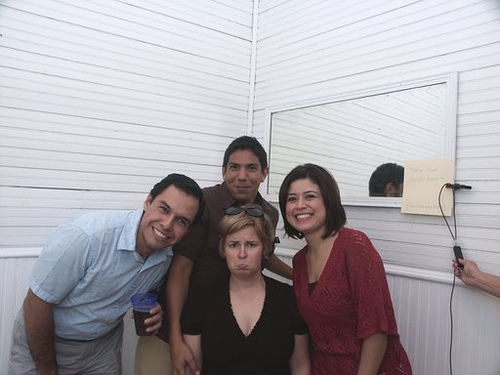In other posts on this site, I’ve talked about ways to stop having a bad day, for instance through music, idea repair, and emotional antidotes. In their recent book Wellbeing: The Five Essential Elements, Tom Rath and Jim Harter of the Gallup Group (the organization whose research on strength psychology I talk about in my recent post “Should We Maximize Our Strengths or Minimize Our Weaknesses?“) offer a way to greatly increase our chances of having a good day: increasing social time.
According to Gallup’s research, socializing matters. Six hours a day of social time, according to Rath and Harter, greatly increases our chances of having a good day–that is, feeling happy and thriving. “When we get at least six hours of daily social time, it increases our wellbeing and minimizes stress and worry … each hour of social time quickly decreases the odds of having a bad day. Even three hours of social time reduces the chances of having a bad day to 10%.” (Emphasis is theirs.) Social time seems to have a powerful effect on stress levels, even for introverted people.
Six hours seems like a lot, but apparently what helps us in terms of social time is to simply interact with other people in some direct way. Among kinds of social time available to reduce stress, Rath and Harter include talking on the phone and exchanging e-mail. Time spent communicating with other people at work seems to count just as much as time at home or elsewhere.
This may not necessarily be good news for those of us whose work tends to be solitary. For instance, full-time writers or computer programmers may find it difficult to find six hours a work day in which to communicate and be social, since only a small amount of the time in either of those jobs (especially non-book research for writers and meetings for programmers) can be social. Most of the work in those and many other jobs gets done alone, and communicating with other people while doing it makes it next to impossible to be productive.
This suggests that it’s especially important for people whose work is solitary to go out of their way to find social time if they want to be happy and reduce stress. Living with someone you like rather than living alone seems an especially important step. Other possibilities include dinners with friends, exercising in a social setting, having lunch with others instead of alone, and increasing communication with family and friends.













